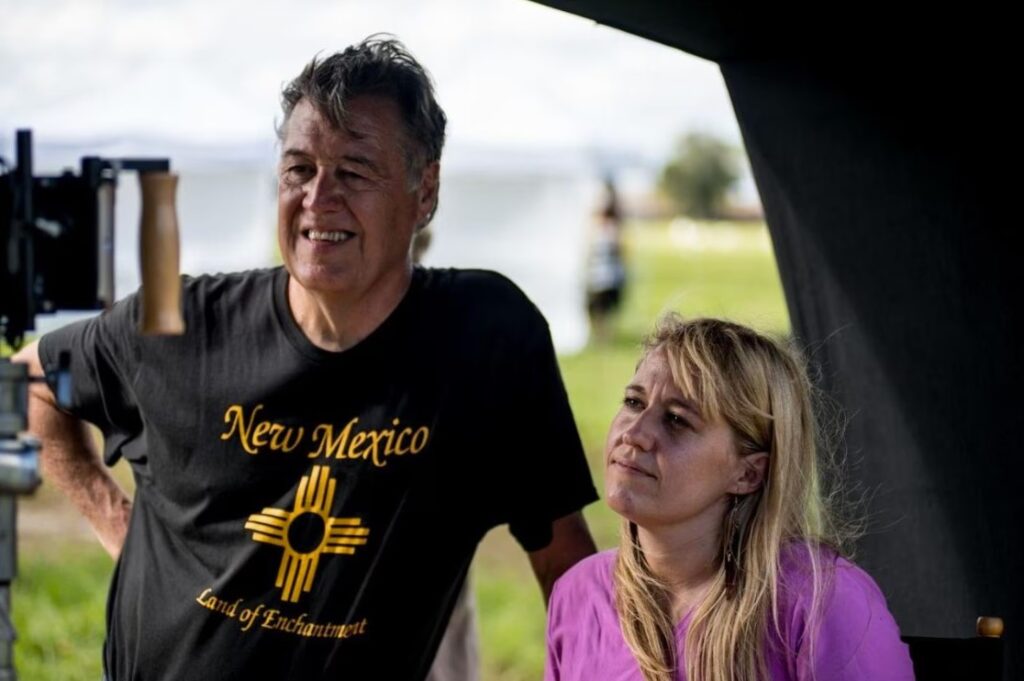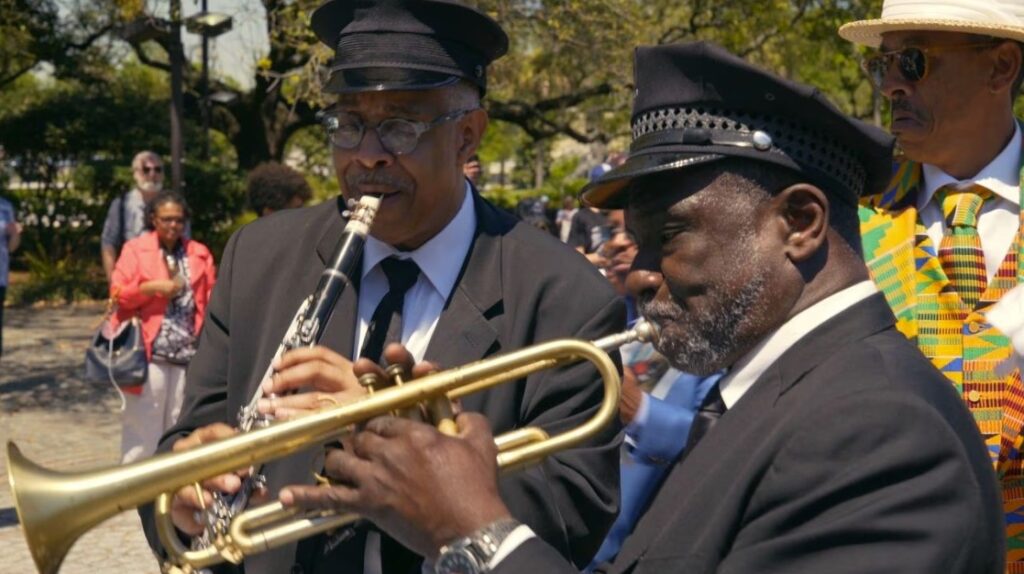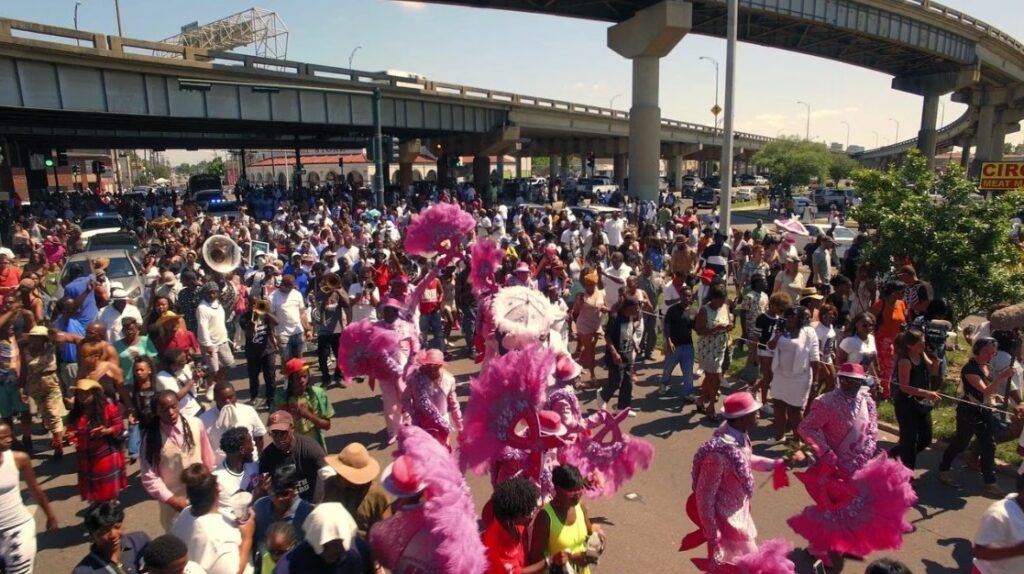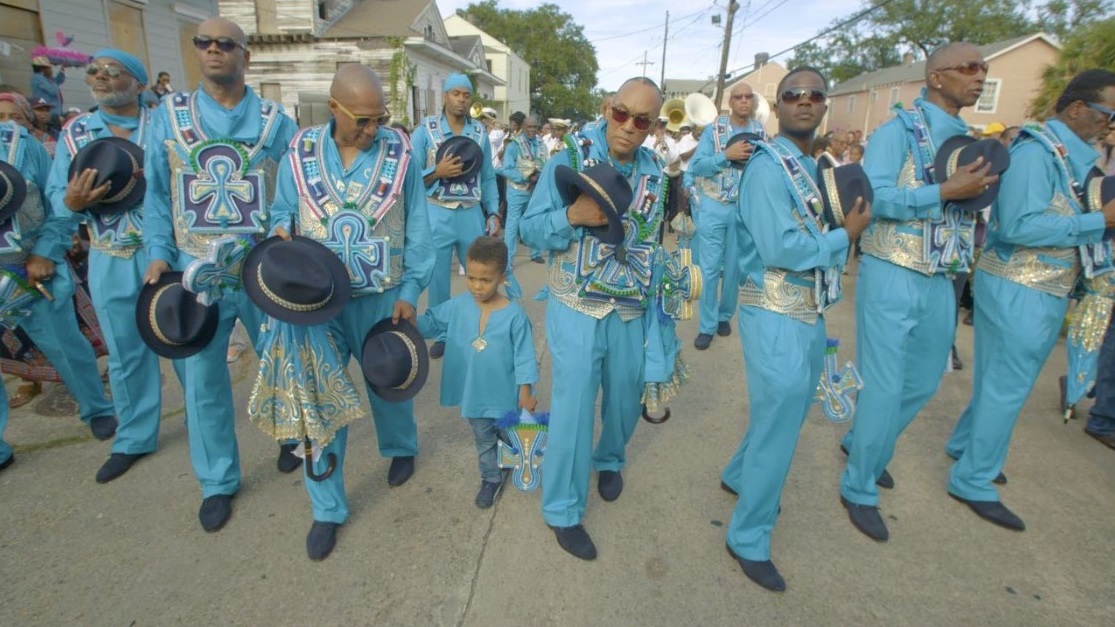NEW ORLEANS (LA)
Boston Globe
June 15, 2023
By Jon Garelick
They are ‘a life force of this culture in this city,’ says writer and filmmaker Jason Berry, who comes to Somerville and Vineyard Haven this week
[Photo above: Film still of Black Men of Labor marching and singing “Amazing Grace” during their annual second line parade in a scene from Jason Berry’s film “City of a Million Dreams.” CITY OF A MILLION DREAMS/SPIRIT TIDE PRODUCTIONS]
New Orleans funeral parades — with their jubilant brass bands, “second-line” dancers, and colorful costumes — “are caravans of memory,” native New Orleanian Jason Berry writes in his book “City of a Million Dreams: A History of New Orleans at Year 300.” The 2018 book uses funerary traditions as a lens on that history going back to the city’s founding — through the civil rights era, and the ravages of Hurricane Katrina — to nearly the present day.
His new documentary film, based on the book, mixes new and archival footage, reenactments, interviews with musicians, journalists, scholars, and other people from the community. It captures the jubilation and grief, beauty and despair of a great, troubled city — and, always, the music.
Berry comes to Somerville and Vineyard Haven this week for screenings and discussions of the film and book.
Q. How did you begin documenting jazz funerals?
A. In the late ‘90s I interviewed [musicians] Michael White, Gregg Stafford, and Milton Batiste. And they were complaining about the impact of the drug trade, so many youngsters dying before they could vote. And how second-line burial dances were becoming kind of fiery and hard-edged. These guys had come up playing the funerals as a sacred ritual coming out of the church, leading to the uptempo high-kick parading for the dead after the burial. It bothered them that the sacred essence seemed to be disappearing. I thought about that a lot. I had probably gone to maybe 50 or 75 funerals at that point. So I filmed, oh, maybe a dozen or more interviews, and I also filmed several funerals. That’s kind of how it began.

Q. Can you talk about the structure of the jazz funeral?
A. “Funeral with music” was the term that jazz musicians used before television. “Jazz funeral” is pretty much a media term, although it’s a concise one. Typically, you have a band either in the church or just outside the church waiting to usher the casket and the procession of mourners into the street. As the coffin goes into the hearse, the band plays the slow, sorrowful melodies, “sorrow songs.” The band then sets out leading a slow-tempoparade: the musicians moving in solemn procession behind a grand marshal.
At a given point, either at the cemetery or just after [the burial] . . . the funeral cortege heads off, and the band strikes out with an uptempo, high-kicking parade anthem for the people in the street — many of whom never knew the dead person — to dance to. “Oh, Didn’t He Ramble” is perhaps the most famous. It’s got those cutting sardonic lyrics: “Oh, didn’t he ramble? He rambled all over town.” The band being the front line and the street dancers being the second line. Once they set out in the burial parade, the body language is much more spirited. It’s unleashed “danced-memory” writ large, or performed large, on the stage of the city street.

Q. The jubilant nature of these parades is so different from the somber atmosphere of other funeral traditions. But the second line, and even the wake you show for gospel singer Linda Lacen, is so joyous. How did that kind of mourning become part of the tradition?
A. Spirituality manifests itself in so many ways. And you know, “Lady Linda” was a gospel singer. She did her work rocking in churches, and as she lay in that open casket and the saxophone player was honking and rocking just a few inches away, and people were dancing, I think it showed a sort of mini drama of how people remembered her and how her music channeled into their feelings. The phrase “danced-memory” signals the way memory of processional movements in the African tradition carries over time. Dancing at funerals is both part of that long tradition of African memory, but it is also in sync with the [Mardi Gras parade] customs of the city.
Q. What do you hope people will take away from the film?
A. I think funerals with music are a life force of this culture in this city. And they speak volumes about our attitudes toward the living and the honor that we give to the dead. I’ve probably been to 250 or 300 funerals over the last 30, 40 years. And I don’t mean just funerals for loved ones or people I knew casually, but funerals with music, and I’ve watched the drama and the beauty of the grieving process, how people sing their sorrows and dance their memories of the souls of the departed. It’s quite eloquent and quite stunning to see. I’m fortunate that I was able to get cameras into enough of these rituals to come away with this documentary.
CITY OF A MILLION DREAMS SCREENING AND DISCUSSION
At Somerville Theatre, 55 Davis Square, Somerville. June 20 at 7:30 p.m. Tickets $14 and $10 (seniors). somervilletheatre.com
At Martha’s Vineyard Film Society, 79 Beach Road, Vineyard Haven. June 23 at 7:30 p.m. Tickets $15. mvfilmsociety.com
Interview was edited and condensed.
Jon Garelick can be reached at garelickjon@gmail.com.


